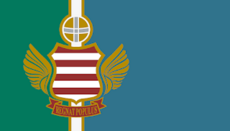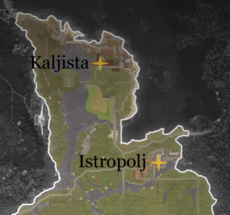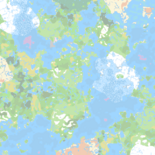Kaljista
| Kaljista | ||
|---|---|---|
| Major City | ||
 Flag of Kaljista (Flag of Danúvia) Flag of Kaljista (Flag of Danúvia)
| ||

In-game Banner of Kaljista (Banner of Danúvia) | ||
 Map of Kaljista and Surroundings Map of Kaljista and Surroundings
| ||
| Overview | ||
| Player Population | ZarKolja | |
| Demonym | Kaljistan | |
| Divisions | TBD | |
| e | ||
| Location | East-central Cinder; the Sanéan Ocean
| |
| Country | Diryn Imperium | |
| Region | Danúvia | |
| e | ||
| Mayor | Hermann Ailbos
Nykol Hartmann (former) Miklos Némann (former) | |
| Legislation | Kaljista City Council | |
| e | ||
| Date of Foundation (IRL) | September 3rd, 2023 | |
| Date of Foundation (RP) | TBA | |
History
Danúvian Era
Kaljista's origins lie in the first wave of expansion of the Duchy of Istropolj which would later be known as Grand Duchy of Danúvia.
Settlers of Ister ethnicity would settle down in the most northern tip of the Island of Kórsia, giving their new home the name "Ajakse". Their settlement would primarily consist of elegant Ister wooden pillar houses on a solid stone base. The biggest of them, which is located on top of a larger hill, would soon become to be known as Tollhouse, as it was the base of operations for Danuvian tax collectors, also taxing maritime trade.
With the second wave of settlers arriving, Ajakse would receive a large amount of Ailb people to work the fields and primitive farms. They would take shelter in small primitive wooden houses which are today known as the Kaljistan slums. The Ailbs would give the place another name: Kaljista. And with the Ister part of the population dwindling and said ethnicity soon only be existing within the upper class, the old name of Ajakse would soon be swept away. "Kaljista" would finally be recognized as official settlement name by the Ducal office in Istropolj, when the settlement finally reached city status.
By then, the Tollhouse had been refitted into a townhall with the first mayor of Kaljista also being of the Ailb ethnicity.
The island of Kórsia was then organized into its own province, with its lands, now also consisting of the largest granary of Danúvia, governed from Kaljista. Said time would be the start of the Age of prosperity for Kaljista, with industrialization setting in along with the addition of proper Ailb style brick buildings and a massive Blackstone bridge, leading up to a mountain on the other side of the Korsian Bay, which is now a key component in the connecting of the Southern and Northern road networks.
During the Age of Crisis and the fall of Danúvia, the last royalist remnant would have its base in Kaljista from where it would strike at revolutionary Republicans down south in the capital. After crushing the last rebels, the Danúvian spirit was already fully dead, with its most southern cities handed over to Dirynum and many people fleeing the region.
Kaljista would undergo a short period of independence as Kórsian State before entering negotiations with the neighboring city state of Alaetia. (Modern-day Ephesus)
The negotiations would result in the establishment of the Principate of Messenia, which Kórsia, as its own province, became a part of. Through Kórsia, Messenia was also considered the rightful successor of Danúvia.
The New shift from the south towards the more northern Alaetia would see the rapid improvement of infrastructure such as the first metro line of the Messenian Metro between Alaetia and Kaljista as well as fortified borders along the road between the two cities to solidify control and guard the road against bordering Kothmire.
